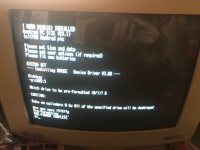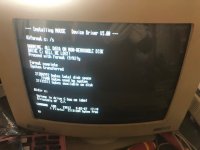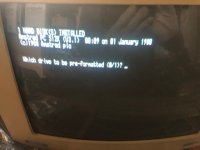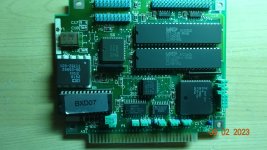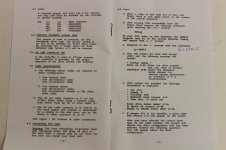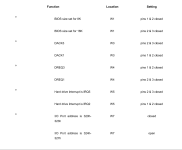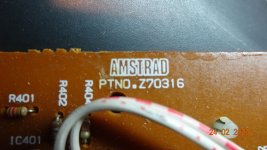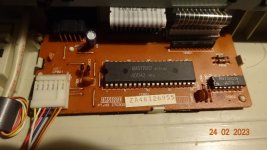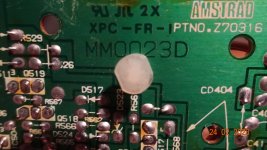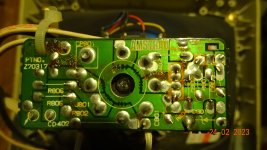Hi folks,
I’m trying to resurrect an Amstrad PC1512 that’s been in the attic for about 25 years. I’ve fixed a corroded leg on a ROM, removed the extra 128k RAM chips to get past a memory parity error and I can boot DOS (original
System disks).
Anyway, the MiniScribe MFM HDD has sat down but I have an ST225 and an ST125 and both the original 8 bit controller and another I have seem to support both drives - both are WD controllers and I can LLF both drives using debug and g=c800:5, and subsequently format with /s and I can read data back from the drives. All looks good.
What I can’t do is get it to boot from the drives though - with the original controller (can’t find a part number yet...) it’s just that nothing happens, with the other (an LCS-6210) when there’s no boot disk in A:, it starts the preformat utility where i expect it to boot (without running c800:5 manually). It’s almost as if the controller thinks the disk is not formatted and tries to start again preboot, but it does it with both ST125 and ST225 (they have the same geometry, which is also the same as the MiniScribe M8425).
Can anyone think of anything obvious I’m missing here...? I don’t think there’s any setup for the XT to tell it to boot from HDD so it should just work but I’m struggling to think of what to try next.
Thanks In advance!
Gordon
I’m trying to resurrect an Amstrad PC1512 that’s been in the attic for about 25 years. I’ve fixed a corroded leg on a ROM, removed the extra 128k RAM chips to get past a memory parity error and I can boot DOS (original
System disks).
Anyway, the MiniScribe MFM HDD has sat down but I have an ST225 and an ST125 and both the original 8 bit controller and another I have seem to support both drives - both are WD controllers and I can LLF both drives using debug and g=c800:5, and subsequently format with /s and I can read data back from the drives. All looks good.
What I can’t do is get it to boot from the drives though - with the original controller (can’t find a part number yet...) it’s just that nothing happens, with the other (an LCS-6210) when there’s no boot disk in A:, it starts the preformat utility where i expect it to boot (without running c800:5 manually). It’s almost as if the controller thinks the disk is not formatted and tries to start again preboot, but it does it with both ST125 and ST225 (they have the same geometry, which is also the same as the MiniScribe M8425).
Can anyone think of anything obvious I’m missing here...? I don’t think there’s any setup for the XT to tell it to boot from HDD so it should just work but I’m struggling to think of what to try next.
Thanks In advance!
Gordon

